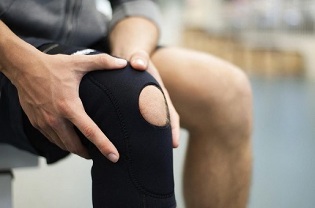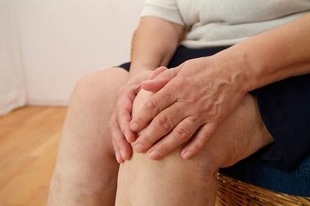
When you move, do you feel the sharp pain that forms at the knee joint? Do you notice the same signs if you bend or unlock your leg? Doctors diagnose a disease such as osteoarthritis. At the same time, it is impossible to delay treatment of the disease.
Consider the fact that the sooner you start taking effective measures, the sooner you will face the disease and the outcome of the disease will not be so dramatic. It is impossible to start the disease yourself, because with it intra-articular cartilage cracks.
Knee osteoarthritis is also referred to as gonarthrosis. In terms of disease incidence, it occupies a leading position. Statistics have shown that there are more patients with this diagnosis in clinics than people with other serious illnesses. In terms of treatment, it takes an impressive amount of time. An integrated approach and use of medications are important here.The disease is characterized by calcification in soft tissues and ligaments, as well as in places where tendons are fixed. Salt deposits are limited. The process is characterized by an imbalance in the optimal blood circulation in the bone vessels, which provoke changes in cartilage tissue.
Causes of occurrence
Pathological microtrauma that forms in the cartilage. The main causes of disease onset include excessive mechanical stress on the cartilage surface.
In other words, osteoarthritis of the knee develops rapidly in those who are subject to frequent physical exertion and overload of the joints. Osteoarthritis can develop in those who often collect. The size of the load increases rapidly if a person is overweight.
The main causes of knee osteoarthritis should be noted:
- Chronic defect. Dysplasia affects the formation of chronic cartilage microtrauma. This factor leads to an imbalance in the proper load on the joints. Keep in mind that the risk of developing a terrible disease increases in people with defects in the musculoskeletal system.
- Mbipesha. This factor is the main reason for the development of osteoarthritis. Proven It has been clinically proven that overweight people are more likely to get sick. Thus, every 6 kg. weight increases the chance of developing osteoarthritis by 45%.
- genetic predisposition. The fact that osteoarthritis of the interphalangeal joints occurs much more often in women than in men has been proven. This indicator is explained by autosomal dominant inheritance.
- Inflammation. The fact is that infectious and chronic arthritis provokes the formation of osteoarthritis. The appearance of immunoglobulins indicates the role of similar factors in the development of osteoarthritis.
- Neurogenic disorders. Violations provoke a decrease in muscle tone located near the joint. Thus, the load on the joints only increases.
Symptoms of Knee Osteoarthritis

The main symptoms of osteoarthritis include sharp pains that are noticed in the knee joint. They appear during exertion, and then disappear again, provided the patient is at rest.
With osteoarthritis, dense formations the size of a pea appear. In addition, seals in the form of cysts, thick liquids, may appear near the nail bed.
If the knee joints are affected during the development of the disease, then the pain increases with prolonged walking or climbing stairs. The main symptom of osteoarthritis is oppression during movement. With osteoarthritis of the hip, pathologies related to the development of the hip joint are observed.
Signs of the disease:
- knee pain that does not go away for a long time
- if you undergo an X-ray examination, then osteophytes are found.
- when the synovial fluid test is performed, it is confirmed that the composition is indeed characteristic of the disease.
- The disease is characterized by the fact that the joint space is narrowed.
- morning stiffness
- soft tissue changes, osteoporosis and cartilage calcification.
Optional signs: these are subluxations or displacements, as well as various erosions and cysts. In total, osteoarthritis of the knee joint is divided into three stages of development, which we will examine below.
1 degree
First degree recognition is quite problematic. An interesting fact is that a person also moves as usual for him, however, sometimes the disease can appear in the form of pain and stiffness.
But such signs are often attributed to a change of weather or an uncomfortable position. And even if you pass the study by means of a radiograph, the imperfection can not be noticed immediately. Here you will need qualified help as well as touch and a thorough examination, which will help to detect an uneven surface in the affected joint area.
People with disabilities turn to traditional medicine as their first aid. And this is a competent approach to solving the problem, because in the initial stage, the disease is difficult to treat.
2nd degree
If, after noticing the first signs of illness, you have not taken any action, then it tends to go to the second. In this case, the osteoarthritis is chronic and the cartilage begins to deteriorate rapidly.
These signs are especially noticeable with increasing physical exertion. However, it makes no sense to give preference to traditional medicine. However, it can be used as an effective adjunct to conventional treatments.
Osteoarthritis of the knee joint and its symptoms begin to appear more and more: unreasonable fatigue appears and the ankles begin to "hurt" and after a while crunches occur. If the disease is left untreated, it leads to deformity of the joints.
third degree
It also happens that, observing noticeable changes, the patient still does not take action, while the mechanisms working against him begin to actively begin. Meanwhile, inaction provokes irreparable consequences.
It is also worth noting that severe pain occurs in the joint. This factor does not depend on whether you are in action or on vacation. There are also cases when the joints do not allow a person to move.
Treatment of knee osteoarthritis

Osteoarthritis therapy is a very long process and will largely depend on the degree to which the disease is.
Basically, the treatment of knee osteoarthritis is based on the following stages:
- Anesthetize the affected joint. As a rule, the doctor prescribes pain relievers - analgesics.
- Inflammation must be eliminated. If inflammation is shown in the affected area as well as swelling, then such a defect should be eliminated immediately. In this case, anti-inflammatory drugs are prescribed.
- Restoration of cartilage tissue. This is considered to be the most important factor in treatment. In case it can not be rebuilt, then it is necessary to stop the degenerative course. You should not expect immediate action from the medication, but they should be taken based on individual characteristics.
If the joint is affected by the absence of symptoms, then in this case the patient will be prescribed effective warming oils. Their main purpose is to increase blood circulation to the affected area.
These include heating oils that have no side effects. The treatment is accompanied by a pleasant sensation of warmth.
Preventing Knee Osteoarthritis
Divided into secondary and primary.
The first focuses on weight control and injury prevention. The chance of developing osteoarthritis can be reduced by wearing the right shoes and doing regular exercises that work to strengthen muscles and support joints.
Secondary prevention includes eating healthy foods and red meat and animal-based foods are better replaced by lean fish and poultry. Try to eat lots of fruits and vegetables, and as a preventative measure - capsules containing fish oil. Drink at least 8-9 glasses of water.
Focus on minerals and vitamins that promote optimal bone function. Also known as your allies are antioxidants, which actively fight free radicals that destroy the threat. Arthrosis is a disease that is not tolerated by amateurs, so you should seek help from an experienced doctor.



































